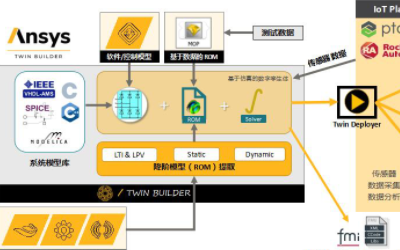Easing tech bottlenecks vital for development of 'dual-circulation'
Improving fundamental industrial capabilities and removing technology bottlenecks are crucial for achieving high-quality growth under China's new "dual-circulation" development pattern, a senior economist said.
Jiang Xiaojuan, head of the School of Public Policy and Management at Tsinghua University and former deputy secretary-general of the State Council, said to realize the new pattern of dual-circulation, it is necessary to better match supply and demand in the national economic cycle.
More efforts are needed to further supply-side structural reforms, develop a modern economic system and improve the efficiency of resource allocation, so as to continuously expand the domestic economic circulation, Jiang said.
Her remarks came after China put forward the "dual-circulation "development pattern, whereby internal economic circulation is the mainstay while the domestic and external markets can complement each other.
Analysts said the new development pattern has marked a strategic shift in China's policymaking and is expected to serve as a policy framework for the upcoming 14th Five-Year Plan (2021-25).
According to Jiang, the "dual-circulation" development pattern is in accordance with the complex and profound changes in the international environment and the new conditions and requirements that have emerged in the new stage of China's economic development.
In the past when economic globalization was in an in-depth development stage, an active involvement in trade had played an important role in boosting China's economic growth. But in recent years, the international circulation momentum has significantly weakened. Meanwhile, China has emerged as the world's second-largest economy, with a complete industrial system and a super-large market, Jiang said.
"Such a large economy can't be simply driven by the international market. Taking the domestic market as the mainstay is not only a strategic plan, but also a realistic requirement," she said.
Also, to improve the quality and efficiency of internal economic circulation, more efforts are needed to participate in international circulation at a higher level, Jiang said, adding that through international trade, the allocation of resources can be more precise and more efficient, and will help China seize the opportunity to adjust the division of labor in the global industrial chain.
"Take the US electric car company Tesla for example, it has a higher level of international cooperation in car manufacturing than that of traditional cars," Jiang said.
According to her, the global industrial chain is not only to gather global resources for joint production, but also to maximize the benefits of global division of labor. "Through open cooperation, we will participate in the global industrial chain to a greater extent, which is of great significance to promote innovation and improve quality," she said.
In Jiang's view, China has become an important link in the global industrial chain, and a more open domestic market can help create new advantages in international cooperation and competition.
More efforts are needed to further supply-side structural reforms, develop a modern economic system and improve the efficiency of resource allocation, so as to continuously expand the domestic economic circulation, Jiang said.
Her remarks came after China put forward the "dual-circulation "development pattern, whereby internal economic circulation is the mainstay while the domestic and external markets can complement each other.
Analysts said the new development pattern has marked a strategic shift in China's policymaking and is expected to serve as a policy framework for the upcoming 14th Five-Year Plan (2021-25).
According to Jiang, the "dual-circulation" development pattern is in accordance with the complex and profound changes in the international environment and the new conditions and requirements that have emerged in the new stage of China's economic development.
In the past when economic globalization was in an in-depth development stage, an active involvement in trade had played an important role in boosting China's economic growth. But in recent years, the international circulation momentum has significantly weakened. Meanwhile, China has emerged as the world's second-largest economy, with a complete industrial system and a super-large market, Jiang said.
"Such a large economy can't be simply driven by the international market. Taking the domestic market as the mainstay is not only a strategic plan, but also a realistic requirement," she said.
Also, to improve the quality and efficiency of internal economic circulation, more efforts are needed to participate in international circulation at a higher level, Jiang said, adding that through international trade, the allocation of resources can be more precise and more efficient, and will help China seize the opportunity to adjust the division of labor in the global industrial chain.
"Take the US electric car company Tesla for example, it has a higher level of international cooperation in car manufacturing than that of traditional cars," Jiang said.
According to her, the global industrial chain is not only to gather global resources for joint production, but also to maximize the benefits of global division of labor. "Through open cooperation, we will participate in the global industrial chain to a greater extent, which is of great significance to promote innovation and improve quality," she said.
In Jiang's view, China has become an important link in the global industrial chain, and a more open domestic market can help create new advantages in international cooperation and competition.








